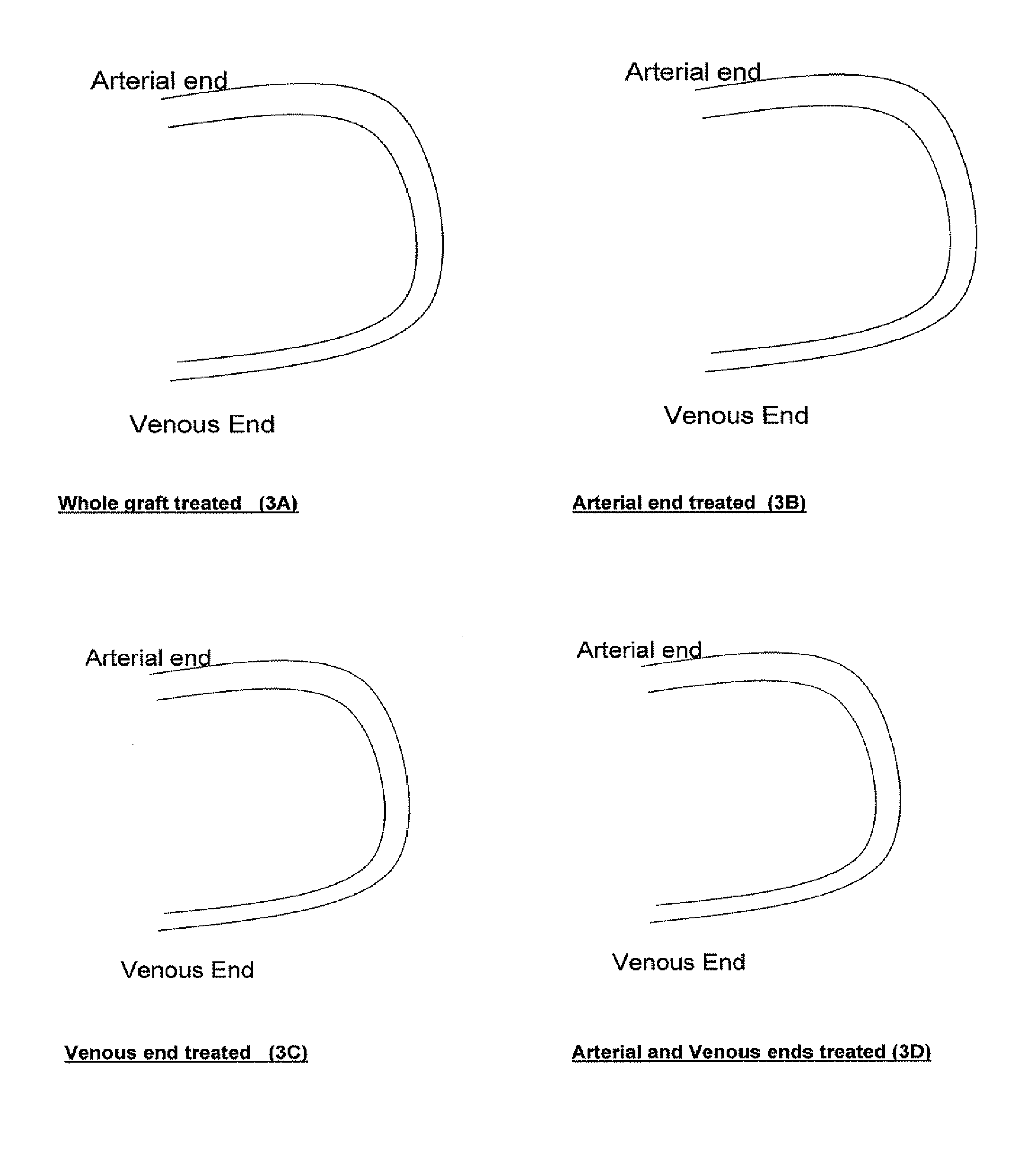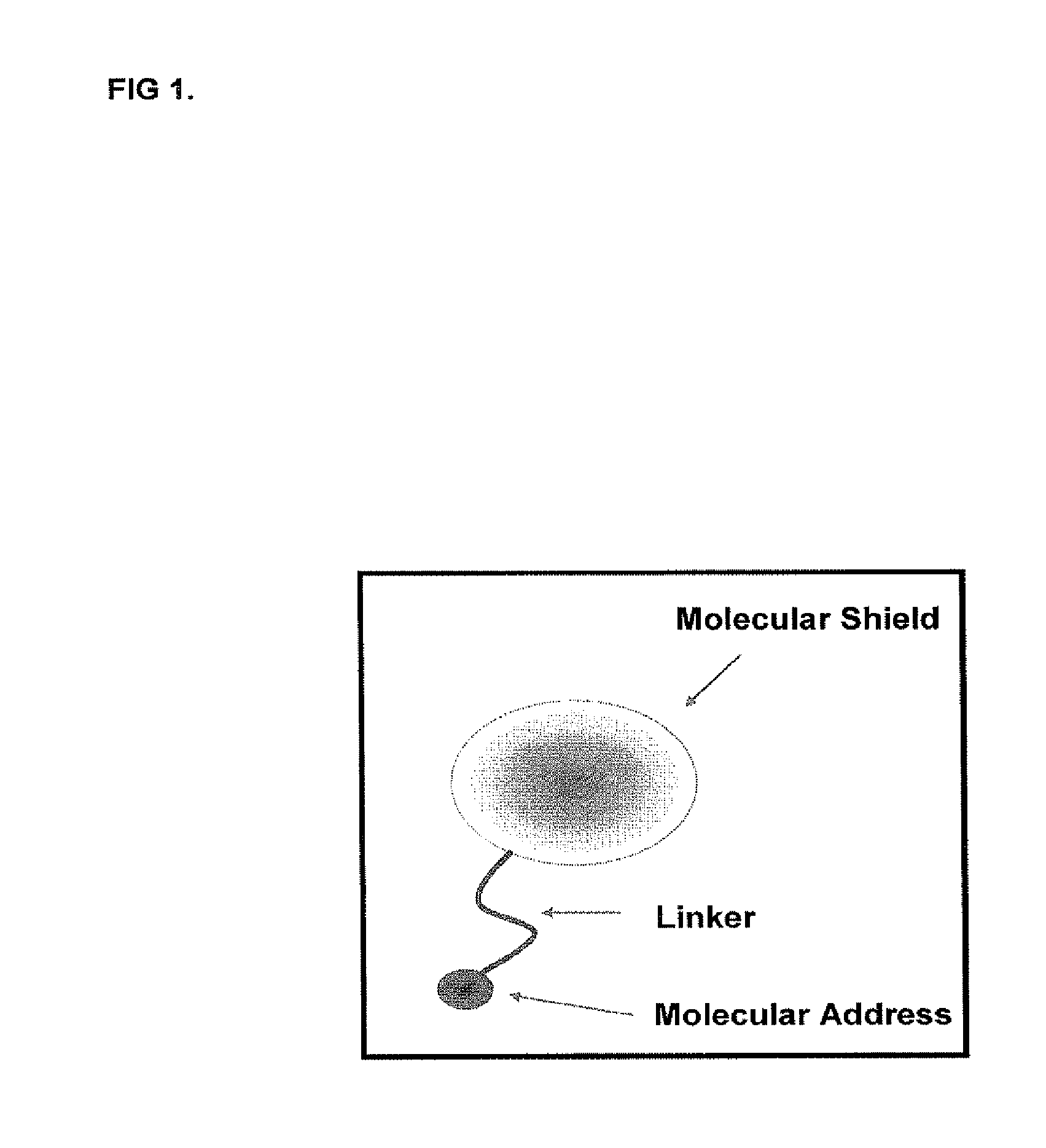Proteomic Antisense Molecular Shield and Targeting
a molecular shield and antisense technology, applied in the direction of peptides, prosthesis, drug compositions, etc., can solve the problems of graft failure, endothelial surface localized damage, and exposure of the underlying extracellular matrix, so as to promote endothelial adherence, promote endothelial cell migration and growth, and promote angiogenesis
- Summary
- Abstract
- Description
- Claims
- Application Information
AI Technical Summary
Benefits of technology
Problems solved by technology
Method used
Image
Examples
example 1
[0092]FIG. 1 shows an example of a proteomic antisense molecular shield of the present invention. A ligand to the extracellular matrix can include collagen, fibronectin, and vWF. A nanoscale molecular shield can be utilized to form a molecular blockade at the therapeutic site. The nanoparticle component can be connected to the biological molecule via a linker moiety.
example 2
[0093]In damaged blood vessels, extracellular matrix (ECM) below the endothelial cells can be exposed. These molecules can serve as binding sites for transmembrane proteins on platelet surfaces. Binding of platelets to exposed ECM can lead to pathologic clot formation. Proteomic antisense molecular shields can be used to coat ECM, blocking unwanted platelet adhesion. See FIG. 2. Such shields can also be used to coat vascular grafts. See FIG. 3.
example 3
[0094]Protein-Based Nanoparticles that Protect Vascular Intervention Sites from Platelet Adherence
[0095]Vascular interventions, such as bypass grafting, stenting, and angioplasty, have significantly altered management of patients with cardiovascular diseases. However, during these procedures the endothelial cells that form the inner lining of blood vessels can be damaged. This exposes extracellular matrix (ECM) molecules that lie underneath endothelial cells, which are potent sites for platelet binding and aggregation. For this reason, a complication of vascular interventions includes platelet activation and thrombosis. Thrombosis can seriously compromise the function of the vascular channel under repair.
[0096]Currently, treatments that target platelet function are used to decrease the likelihood of this complication. While these agents are very successful in down-regulating platelet activity, they indiscriminately attenuate the function of all circulating platelets. This can lead t...
PUM
| Property | Measurement | Unit |
|---|---|---|
| MRI | aaaaa | aaaaa |
| biocompatibility | aaaaa | aaaaa |
| biocompatible | aaaaa | aaaaa |
Abstract
Description
Claims
Application Information
 Login to View More
Login to View More - R&D
- Intellectual Property
- Life Sciences
- Materials
- Tech Scout
- Unparalleled Data Quality
- Higher Quality Content
- 60% Fewer Hallucinations
Browse by: Latest US Patents, China's latest patents, Technical Efficacy Thesaurus, Application Domain, Technology Topic, Popular Technical Reports.
© 2025 PatSnap. All rights reserved.Legal|Privacy policy|Modern Slavery Act Transparency Statement|Sitemap|About US| Contact US: help@patsnap.com



